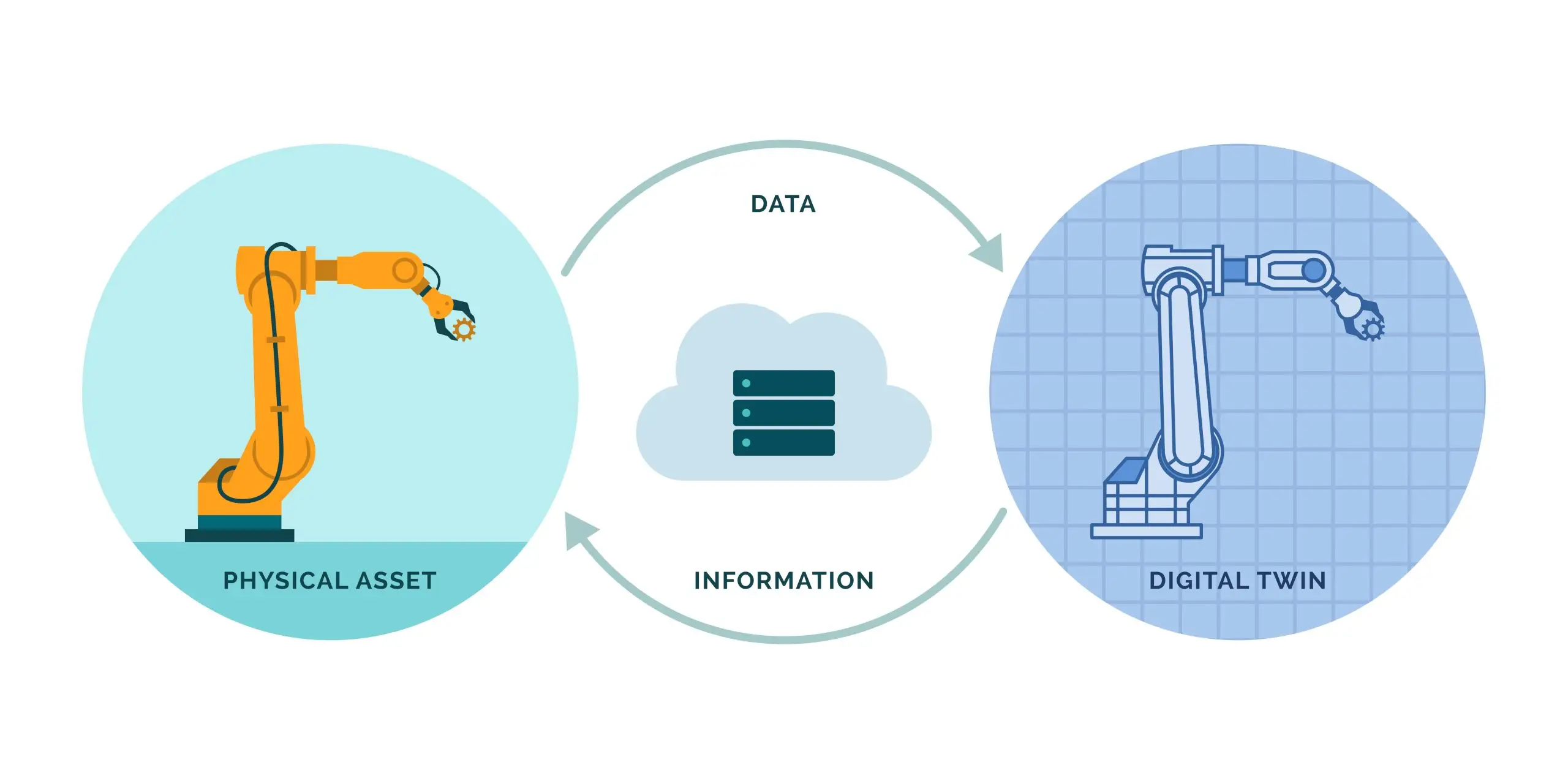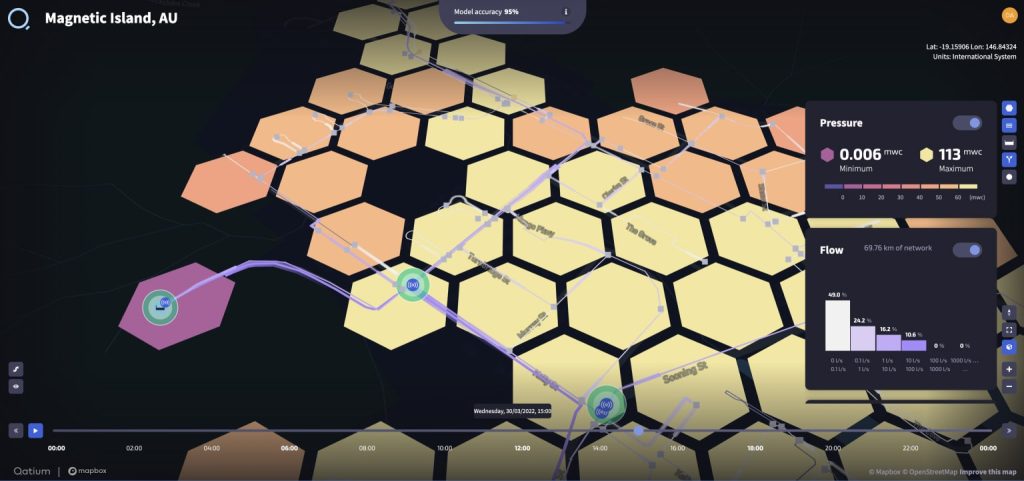Rising city populations, high consumption of resources, ageing infrastructure, climate change, complex Water Distribution Systems — these are but a few issues forcing those in city management to rethink their sustainability and efficiency efforts. Underlying each is the question of clean water management, and how water utilities can be empowered to make informed decisions in the face of the issues combined. The answer is this: water utilities need to improve the management of Water Distribution Systems by embracing advanced tools that combine real-time sensor data gathering, advanced analytics, and model-based capabilities to simulate “what-if” scenarios. And, by fulfilling all of these functions, that’s exactly where Digital Twins for Water Utilities fit into the picture.
What is a Digital Twin?
In 2003, Dr. Michael Grieves introduced Digital Twins as digital representations of physical products to help optimize the life cycle of a product, particularly its design and manufacturing process, and the subsequent maintenance during its lifetime. According to Grieves, any Digital Twin model must contain three core parts:
- Physical assets.
- A virtual model of the physical assets.
- The connections of data and information that tie the virtual and real spaces together.
Since then, many other researchers have expanded on the definition, foundations, and key technologies involved in building a Digital Twin, including:
- Modeling: The physical and virtual models must describe the main features of the system.
- Connection: The physical and virtual systems should be constantly connected. This concept includes data transmission, conversion, storing, protection, etc.
- Advanced data analytics: To obtain information from a dataset, it must be pre-processed (cleaned and filtered) and mined by both data analysis and Artificial Intelligence (AI) algorithms.
- Interaction and service: To optimize or adapt the system processes according to external changes, the Digital Twin should be able to suggest optimum operational settings once they have been validated by simulations.

Digital Twin — a virtual model of the physical asset
Digital Twins for Water Utilities: how can they solve challenges facing the industry?
In a city management context, especially regarding the drinking water supply system, hydraulic models have over time become more pertinent and are commonly used by water utilities to make more accurate decisions. Digital Twins help water utilities to not only better understand past and current performance of their water systems, but also predict and optimize future performance. They can also simulate any potential changes and their impact in the virtual world before they occur in the physical world. This level of virtualization limits the risk to real-world operations, helps utilities make quick, data-driven decisions, and helps them respond in the best way to crises and other what-if scenarios. Given the scale of the challenge — namely exponential population growth, resource scarcities, and aging infrastructure — traditional Water Distribution Systems have become increasingly complex and hard-to-manage. Therefore, Digital Twins are being used with more frequency within Water Distribution Systems to improve issues such as:
- Asset management
- Leak localization
- Optimization of system operations
- Energy efficiency
- Water quality
- Planning of maintenance operations
- Early response to emergencies
In short, it’s predicted that the Digital Twin model will soon be an essential support system for almost all types of decision-making within the industry. We discussed the journey of Digital Twins for Water Utilities with industry experts in our video podcast, Qtalks. The focus of the episode was their evolution and ways in which this could be accelerated.
What do Digital Twins look like in action?
Setting up a digital twin can be a lengthy process with high costs. Below are just a few examples of how Digital Twins are already being applied within the operation and management of real Water Distribution Systems.
The EPANET-RTX extension
The United States Environmental Protection Agency (EPA) and the University of Cincinnati created the EPANET-RTX extension, a real-time hydraulic modeling framework based on the EPANET engine. The application, which connects a hydraulic model with real-time field data, was created to help understand the hydraulic and water quality behavior of Water Distribution Systems, and to explore the potential of hydraulic models in representing real systems. Its capabilities were successfully tested in the field for a case study of the Northern Kentucky Water District.
WaterBox: A small-scale testbed
WaterBox, a small-scale testbed, allowed for the simulation of advanced monitoring and multiple failure and anomaly scenarios, such as pipe bursts or communication issues, within a fail-safe environment. This approach enabled the real-time running of control algorithms (fed from sensor data) and was aimed at energy optimization, automatic control, and event-driven communication.
Qatium: A cost-effective Digital Twin
Qatium provides a cost-effective Digital Twin for Water Utilities solution that maximizes the use of existing technology solutions and data sources. The solution includes the use of City-owned data-loggers that provide a live stream of data through an existing web based dashboard and a link to SCADA historian. A hydraulic model can be generated based on open GIS data alone and links between the hydrant monitoring system and the model have been enabled through an API layer. Qatium also allows users to import their networks with the help of an AI-powered assistant that guides them through the process, providing insights and suggestions for possible improvements as the model is automatically built.

If you’re interested in putting a Digital Twin into practice, try Qatium. It’s free to create an account and to start solving the challenges outlined above.
Digital Twins enable data-driven decision making
Digital Twins represent a new method of improving the management of Water Distribution Systems by enabling water utilities to simulate and predict scenarios, analyze asset performance and health, and test scenarios virtually to effectively address them in the real world. In the future, Digital Twins will be crucial for decision making and will form an integral part of the water industry by enhancing water system operations, reducing operating expenditure, reducing its environmental impact, and ensuring water security.









